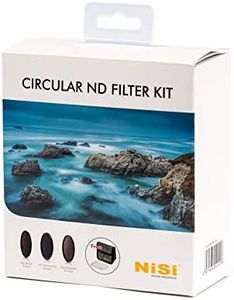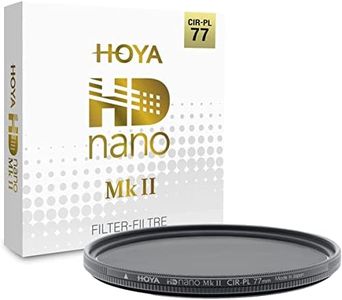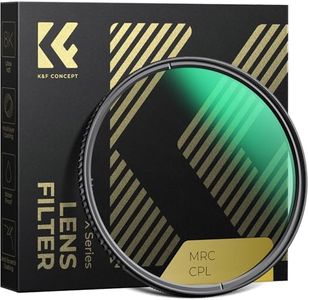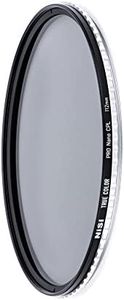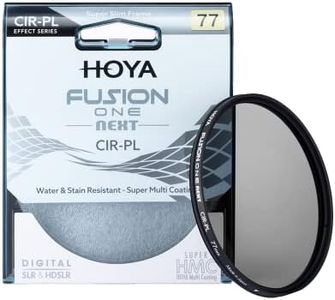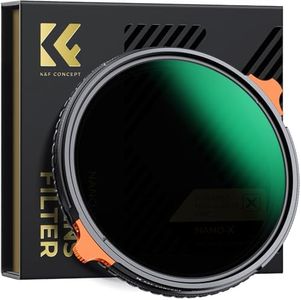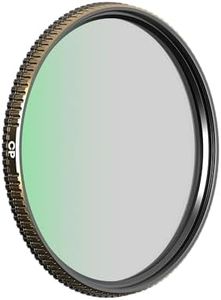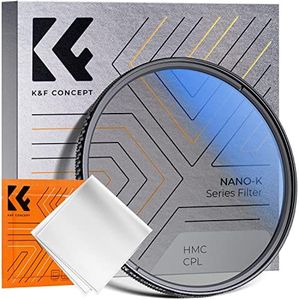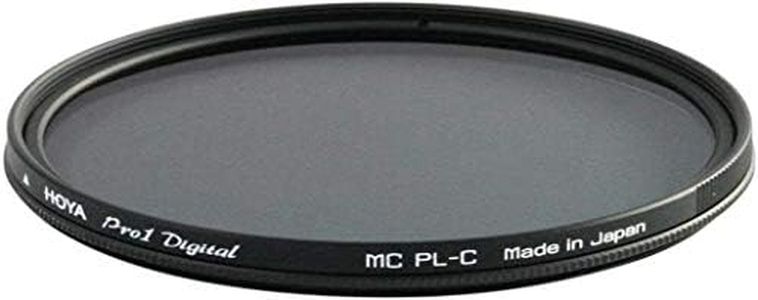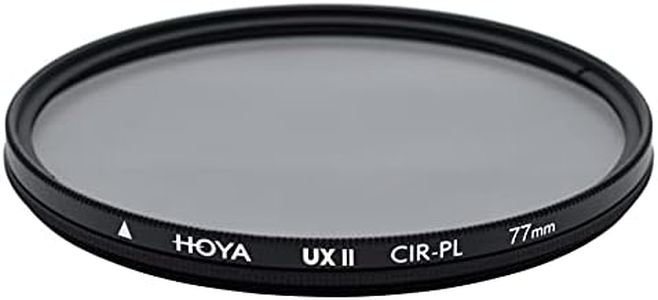We Use CookiesWe use cookies to enhance the security, performance,
functionality and for analytical and promotional activities. By continuing to browse this site you
are agreeing to our privacy policy
10 Best Polarizing Filters
From leading brands and best sellers available on the web.Buying Guide for the Best Polarizing Filters
When choosing a polarizing filter for your camera, it's important to understand what this accessory does and how it can improve your photography. Polarizing filters help reduce reflections and glare from non-metallic surfaces like water or glass, and they also enhance the colors and contrast in your photos, especially when shooting landscapes. The right filter can make skies appear bluer and foliage look richer, allowing you to capture images closer to what your eye sees. To find the best polarizing filter for your needs, you should consider several key specifications that determine how the filter performs and how compatible it is with your equipment.Filter SizeFilter size refers to the diameter of the filter and needs to match the thread size on the front of your camera lens. This is usually measured in millimeters, and you can find this number either printed on your lens or in your camera or lens manual. It's crucial because using the wrong size means the filter won't fit your lens. Common sizes include 49mm, 52mm, 58mm, 67mm, 72mm, 77mm, and 82mm. To pick the right one, check your lens and select a filter with the exact size—bigger or smaller will not work unless you use adapter rings, which can complicate things or cause vignetting (dark corners in your photos).
Type of Polarizer (Linear vs. Circular)There are two main types of polarizers—linear and circular. The main difference is how they affect your camera's autofocus and metering systems. Linear polarizers are older and can interfere with modern cameras, causing issues with autofocus and light metering, while circular polarizers are designed to work without interfering with these functions. If you have a DSLR or mirrorless camera that uses autofocus and light metering, always opt for a circular polarizing filter. Linear polarizers can be considered if you are using older manual focus film cameras, but for most users today, circular is the safe and recommended choice.
Filter Material and Build QualityThe quality of materials used in a polarizing filter affects both its durability and image performance. Most filters are made from either optical glass or resin. Glass provides better image quality with less distortion and color shift, while resin filters are usually lighter and less expensive, but may scratch easier and affect image clarity. The metal used for the filter ring (usually aluminum or brass) also matters; brass is less likely to bind to your lens. When choosing, consider how often you'll use the filter and in what conditions—frequent photographers or those in harsh environments should look for better build quality for longevity and consistent results.
Coatings (Single, Multi-Coated, Hydrophobic, etc.)Coatings on a polarizing filter help reduce reflections, minimize color cast, and protect the filter's surface. Single-coated filters offer basic protection, but may let in more lens flare or reduce some contrast. Multi-coated filters are better at maintaining color accuracy, image sharpness, and water/dirt resistance. Some high-end filters also have hydrophobic (water-repelling) or oleophobic (oil-repelling) coatings, making them easier to clean if you shoot in wet or dusty environments. If your photography often involves changing weather or outdoor conditions, multi-coated or specialty coatings will keep your images cleaner and clearer.
Filter Thickness (Slim vs. Standard)The thickness of a filter determines how much it may interfere with your images, particularly when using wide angle lenses. Standard filters are thicker and may cause vignetting (darkened corners) on wide-angle shots. Slim filters are thinner to reduce this issue, although they sometimes lack a front thread for attaching a lens cap or another filter. If you mostly shoot with wide lenses or are concerned about picture edges, a slim polarizer is a better option. For normal or telephoto lenses, a standard thickness is usually fine and easier to handle.
Effect Strength and AdjustabilityThe strength of the polarization effect depends on how much the filter can block polarized light and how smoothly you can rotate it to adjust the effect. All circular polarizers can be rotated to control the effect, but some may offer a stronger or subtler polarization. Some photographers prefer a strong effect for dramatic blue skies, while others like more subtle control. If you want maximum versatility, choose a filter that rotates easily and provides a noticeable but controllable change when adjusting—this allows you to fine-tune the look according to the scene and your creative intent.
